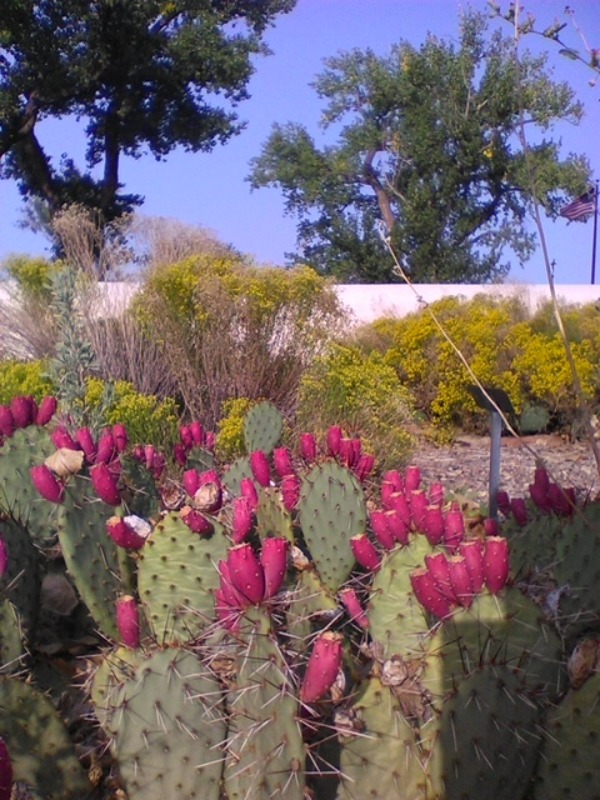Aztec Ruins National Monument, NM
Ethnobotany Series
| ➠ Four-wing Saltbush |
| ➠ Globemallow |
| • Prickly Pear Cactus |
| ➠ Rocky Mountain Bee Plant |
| ➠ Sages |
| ➠ Threeleaf Sumac |
| ➠ Yucca |
| ⇩ Print Hard Copy (PDF 465 KB) |
Prickly Pear Cactus
There are at least 20 species of prickly pear (Opuntia spp.) that grow in New Mexico, and many other species grow throughout the world. Though they are believed to have originated in the Americas, through importation they have spread into virtually every continent except Antarctica. They can grow in a wide range of temperatures from 6 inches to over 15 feet tall.Two of the most common species in the Four Corners area are Brown Spine Prickly Pear (Opuntia phaeacantha) and Plains Prickly Pear (Opuntia polyacantha). The purple prickly pear fruit (called tunas) and other parts of the plant were an important food source to many groups such as Acoma, Laguna, Hopi, Mescalero Apache, San Felipe, Zuni, and others.
The ways of preparation for eating varied from removing spines from the tunas by rolling them in the sand or singeing them off and then boiling and eating the pulp, making jelly, or eating them fresh or sun-dried. The joints of the plant were sometimes roasted and stored for winter use, boiled and dipped in syrup of sweet corn, or mashed into cakes, dried, then stored for future use. The green pads, or nopales, could have spines removed by rubbing them in the sand, and those could be boiled and eaten, too.
Other uses for prickly pear include using the fruit juice to make tan, pink, or rose-colored dye or using the gummy substance of the pads to coat buckskin. Parts of the cactus could also be used as medicine, either in treating boils, splitting the pads and applying them to wounds, or using the spines to scrape infected eyelids, for example.
Do you know of other uses for this versatile plant?

